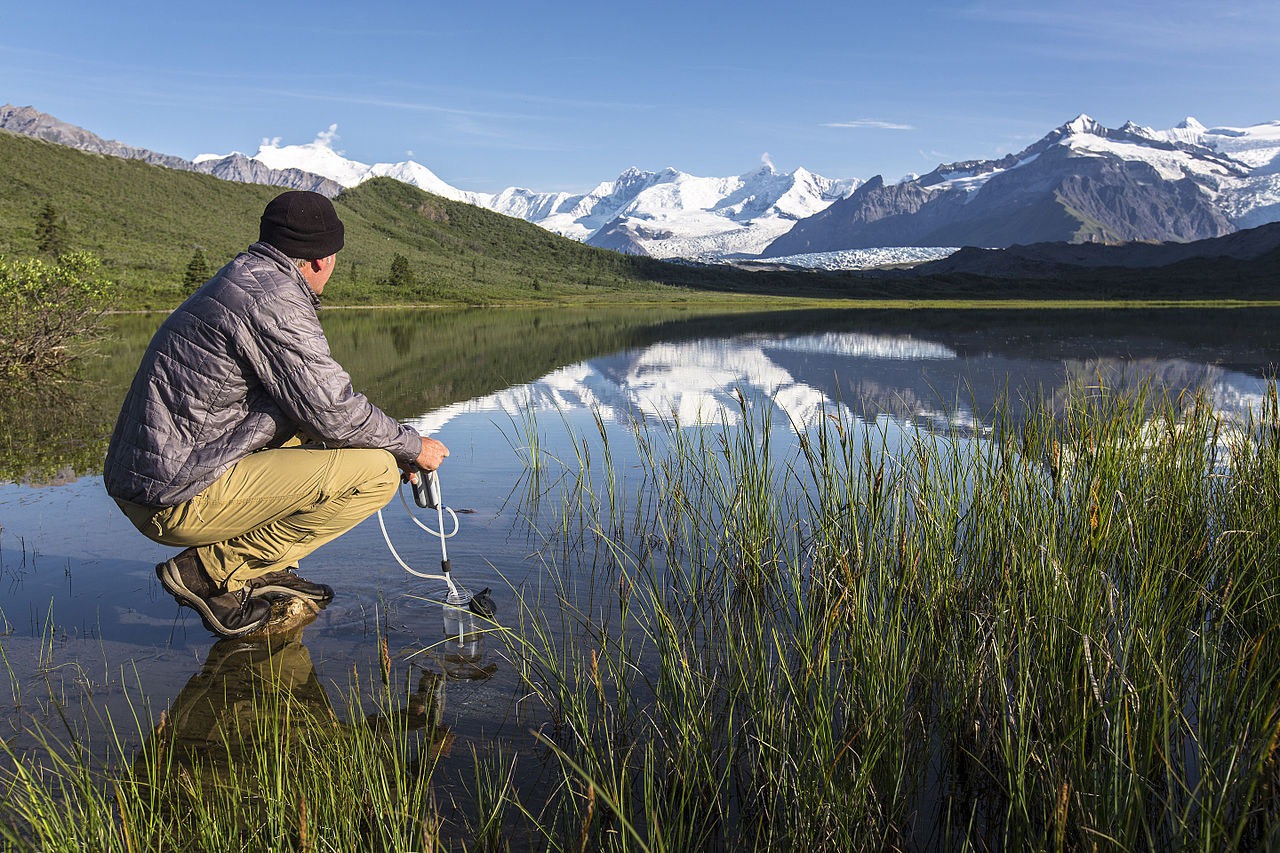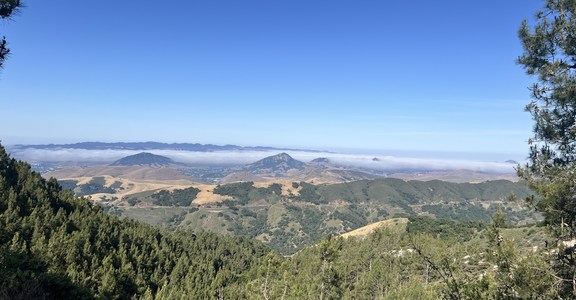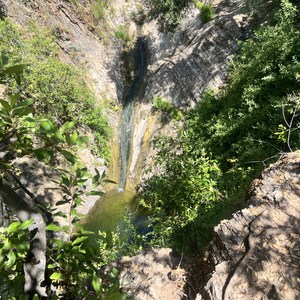You are here
At Outdoor Project, we celebrate a life spent in the wild, and with the sense of adventure must come a heavy dose of precaution. The wilderness can be a dangerous place, after all, and while much of it has been tamed from the wildeor of yore, certain skills are necessary in order to keep you safe and happy while you venture out into it. Undoubtedly, we have all heard stories of those who wander in to the woods without a sense of their own abilities, lacking preparation and a healthy fear of what can happen miles away from civilization. The consequences can be catastrophic, but generally speaking the wilderness is gentle to those who have the skills to explore it the right way.
First and foremost, be humble.
A sense of humility will keep you from being reckless. Spending time in nature is replenishing in particular because it encourages the will—a vast, open landscape with few rules for travel and fewer people gives the adventurer the right to roam on his or her own terms, to follow impulse, to act on will alone. Compare this to urban living, where walking is subject to the stop and go of traffic, queues form in order to fulfill basic human functions, and the topography of the land itself is chopped up into easements and enclosed by doors and walls, regulated by a wholly separate form of willpower. The outdoors is different; it encourages freedom of motion, and that’s why we like it. But an adventurer cannot exist in the outdoors without first observing the limitations of his, her, or their own responsibility. This is built through experience.
Learn how to use a map and compass.
Proper orientation and navigation is first on the list of essential skills. Adventuring into the outdoors, especially where off-trail excursions are concerned, requires the ability to read a map, orient it to the landscape, and use a compass to direct navigation. Triangulation is the simplest technique of orientation. The technique is simple, generally speaking: orient your map to magnetic north and compensate for declination, choose two visible landmarks and measure their degree deviation from north, then converge those lines at a central point, which will give you a rough approximation of where you are.
That said, backcountry navigation requires active attention. Stay found. Continually seek out and recall easily identified landmarks along the way. Even something as simple as turning around to look see where you came from will help you in case you need to return. When possible, use high ground to give yourself a sense of your surroundings, and teach yourself to read the land: the behavior of water, patterns of erosion, the orientation of peaks in a mountain range, where a stream will be found, and the bigger body of water that a stream will usually find. When you master these skills, you will find that wilderness navigation is less about a trail and more about dancing around and between topographical obstacles—it is, in many respects, a cooperative effort between you and the land.
Know how much and what kind of food to bring.
Adventurers into the wilderness carry everything they eat on their backs until they eat it, and this is not just a concern because of weight, but because of nutrient density and cooking requirements, too. High-calorie foods are a prerequisite, especially for thru-hikers, who burn many more thousands of calories per day than usual. Even day hikers should pay close attention to what they bring with them to eat, and it is a good idea to prepare for scenarios in which they find themselves stranded for a night in the wilderness.
The best bang for your buck comes from carbohydrate-heavy foods—instant potatoes, pastas, and quick-cooking grains like oats or couscous—and nutrient-dense fruits, especially avocados. But there is also room for experimentation here. Quinoa is an extremely nutrient-dense grain that takes longer to cook, but you can minimize cooking time by soaking it in water and apple cider vinegar. Leafy greens, which are such an important source of minerals, are almost impossible to keep fresh on the trail unless you have some foraging skills, but you can dry them beforehand for a much longer shelf life. Imagine: mint and parsley tabbouli wraps with tomatoes, quinoa, and smoked salmon tossed in lemon juice and olive oil. Go big and toss it with dill, too. This is a very achievable goal with enough planning and ingenuity.
Bear Safety
When it comes to food, storage is especially important when venturing into bear country. Proper steps need to be taken in order to ensure your safety from bear attack—which are unusual, but not impossible—and more typically the safety of the bears. When habituated to human food, bears become dependent and must be euthanized. For that reason, proper safety and food storage is paramount in bear wilderness.
In the Lower 48, most of the grizzly bears have been hunted to extinction. The only remaining populations survive in Yellowstone National Park and areas along the Continental Divide, especially in Montana. In these areas, it is critical to carry countermeasures to bear attack, like bear spray. Bear spray is a pressurized capsaicin deterrent used against charging bears; it can save your life in the worst case scenario, and it should only be used in those cases.
More likely, bears are in search of food, and will break into food containers in order to find it. There are two options to deter this: use bear-proof canisters, the bear-proof lockers used in campgrounds. In some parks, it can be safely locked away in a car.
One of the best tools, however, is prevention. If you’re traveling in bear country, make yourself loud. Dangerous bear encounters occur when the animal feels threatened, and they will avoid you if they can hear you coming. Treat it like karaoke!
Building a Fire
In the backcountry, it is important to first and foremost check the fire safety levels and prepare accordingly. If it is safe to build a backcountry fire, one of the best methods is the teepee method, like building a pyramid of silverware. The idea is to build slowly; especially in damp conditions, it is easy to smother a fire before it has a chance to grow.
Drive a forked stick into the ground so that it leans against a supporting stick. Build around it with more tinder, leaving enough room to light the fire with fire-starting materials, placed inside the teepee—dry grass and moss are especially useful. Once you have sparked these fire-starting materials, build the fire slowly by adding more sticks, and when the coals have grown, logs.
In the backcountry, the more efficient you can be with fuel, the better. Harvest from fallen debris, never living material. A fire does more than warm you; it is a morale booster, a task to focus on, and a great way to add to the ambiance of being in the outdoors, but don’t abuse the land in order to achieve it.
Building a Shelter
For the purpose of survival, there are two types of shelters you need to know: the kind that keep you dry and the kind that keep you warm.
In wet conditions, a simple lean-to is easy to build and protects you from the rain. Prop a 8- to 10-foot beam between two forked supports, creating a triangular opening. Leaning sticks against the support beam, create an enclosure. Complete the shelter by layering branches or leaves on top of the shelter to shield the rain. This shelter, though simple, will keep you dry, but its simplicity makes it vulnerable to collapse, so it is important to build it near windbreaks or low the the ground.
In snowy conditions, a snow cave will keep you dry and warm—remarkably so. However, its design carries an inherent danger of asphyxiation if not properly ventilated. In deep snows, burrow 8 feet horizontally into the snow and begin to excavate out, building a sleeping platform raised above the floor. Add a thin trench below your sleeping platform that leads to the exit. These will ensure that your exhaled carbon dioxide does not “pool,” which carries with it the danger of asphyxiation. Curve the walls and ceiling to a point rather than square walls to direct meltwater to the floor without dripping.
Water Filtration
Access to water is paramount to survival in the outdoors. As such, there are several tools at your disposal to keep yourself hydrated and safe. Experts argue that you should drink half of your body weight in ounces every day to ensure that you are properly hydrated, and it is a burden to carry this amount of water with you—especially when planning for longer journeys.
A wide array of alternatives is at your disposal for the treatment of water. Bringing water to boiling point kills off deleterious bacteria, period, but you want to conserve your fuel, so this is an option used only when necessary. Water filters physically strain water, and they are useful in the temperate North America to combat typical waterborne bacteria. However, they do not strain viruses. Water purifiers, most of which employ chemicals like iodine, are best in situations when viruses are present, as they are in the developing world. However, you may want to consider a prefilter to remove sediments that chemical purifiers will leave behind. (In fairness, sometimes a bandana is all you need.) Lastly, ultraviolet purifiers use UV light to sterilize water. They require batteries, which can be cumbersome and expensive, but they are quick and efficient methods.
Learn the signs and symptoms.
For adventurers who spend enough time in the wilderness, a Wilderness First Responder certification is a good idea, but some basic first aid skills are a must while in the open country. Chief among these, other than avoiding danger, is the ability to prevent worsening conditions before they become dangerous. Drink enough water, and pack adequate filtration devices to keep yourself hydrated. Learn how your body reacts to heat and cold, and learn how to layer your clothing so that you can quickly react to changing conditions.
Should dangerous situations arise, learn how to quickly assess and act in potentially life-threatening situations. Hypothermia and dehydration are a nuisance in urban settings, but they can kill on the trail. Assessing an injured and unconscious hiker can make the difference between life and death. It is absolutely critical to know the signs and symptoms.
Hypothermia occurs in three stages:
- Stage 1: shivering. We have all experienced this when it gets cold over the winter, when our teeth chatter and our heart rate spikes.
- Stage 2: violent shivering and stuttering speech. As the body temperature drops, blood moves from the extremities to the organs to protect vital functions. Coordination becomes impaired, producing the “stumbles and mumbles.”
- Stage 3: shivering ceases and muscle coordination is further impoverished. Victims sometimes lose all coordination and the ability to speak. Amnesia may be evident, along with odd behaviors like burrowing and removal of clothing.
Dehydration coincides with thirst, of course, but headaches, fatigue, dizziness, and confusion can also appear. The color of urine is the best way to evaluate and prevent dehydration; deeper colors signal deepening dehydration.
Lastly, while it is best to complete formal training for emergency situations, a basic knowledge of how to assess an injured hiker could make a difference in that hiker’s life. When assessing a situation, do not move or change the position of the victim and follow the ABCDE’s:
- Airway: check to see that there are no obstructions.
- Breathing: check to see that breathing is still normal. Pro tip: use sunglasses to check for the condensation of breath.
- Circulation: check for a pulse and signs of bleeding.
- Disability: check for major impairments, such as broken bones.
- Exposure: check the victim’s exposure to the elements, such as being positioned on the snow (a hypothermia risk).
Though by no means comprehensive, these skills will help to keep you safe and happy in the outdoors.




Comments
Sign In and share them.